This page contains affiliate links. Please read our disclosure for more info.
The Langhe Italy is an area of rolling hills in the Piemonte region in the north of the country. The hills are covered in vineyards with medieval hill towns and ancient castles perched atop their peaks.
The scenery is gorgeous, but what really attracts visitors is the outstanding wine and food—Barolo reds, white truffles, handmade pasta, and many more delicacies.
Along with Monferrato and Roero, the Langhe was made a UNESCO World Heritage Site in 2014 for its cultural landscapes and winemaking traditions that go back hundreds of years.
We spent a week in the Langhe region, based in the tiny village of Castiglione Falletto, and fell in love with this beautiful and often overlooked part of Italy.
Here are 10 reasons why we think you should visit.
Contents
- 1) Wine
- 2) Escape the Crowds
- 3) Vineyard Hikes
- 4) Hill Towns
- 5) Delicious Food
- 6) Truffles
- 7) Barolo Wine Museum
- 8) Great Accommodation
- 9) Combine with Turin
- 10) Easy Access
- Langhe Italy Map
- Summary
- More Italy Posts
1) Wine
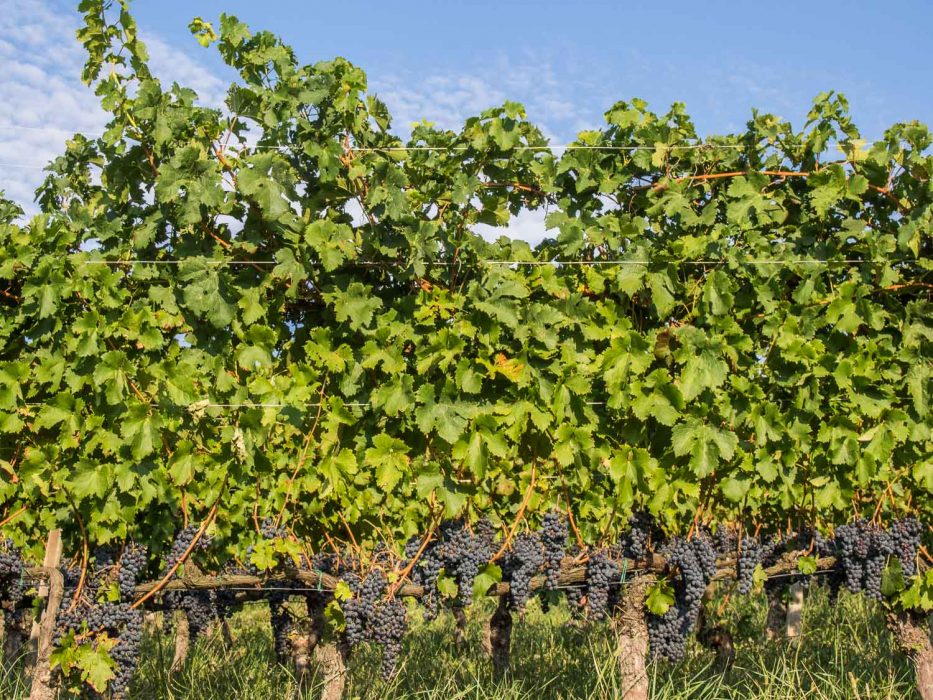
Some of the best red wine in the world is made in Le Langhe.
Barolo, the “King of Wines”, is the most well-known, but you can also enjoy excellent Barbaresco, Barbera, Dolcetto, and more.
We’re not wine experts, but we enjoyed tasting our way around the area and never had a bad glass.
There are plenty of tasting opportunities. You can visit one of the many wineries (most of them family-run), although you usually need an appointment for tastings and tours.
This private guided wine tour from Alba takes you to a boutique winery for a tasting.
Most villages have a cantina communale where you can try a range of wines from the local area.
Wine bars are also a good option—we loved our experience tasting four Barolo wines at Enoteca La Vite Turchese in Barolo village. It included an informative talk from the owner.
And of course, with every meal you’ll be sampling the wonderful wine. Every restaurant we went to had a wine list as thick as a bible.
2) Escape the Crowds
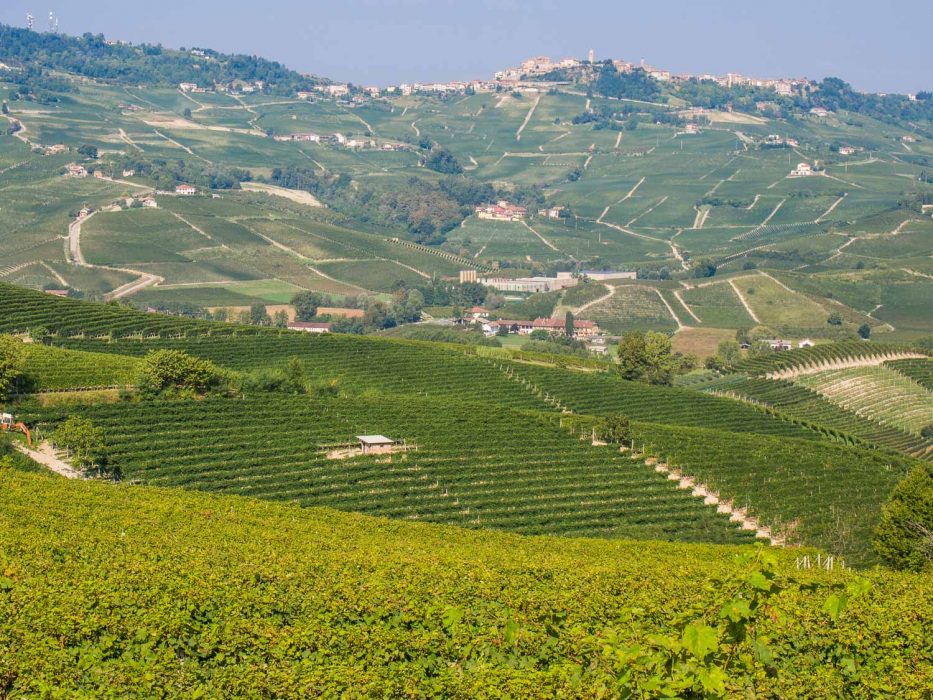
Wine lovers may have heard of Barolo, but the Langhe isn’t on many people’s radar as a place to visit in Italy.
We heard the area described as Tuscany without the crowds and that’s a fair assessment as it has similar rolling hills, vineyards, and medieval villages without the Chianti crowds.
The Langhe also has vineyard hikes and we never came across anyone else on our walks between the wine villages.
While tourist numbers were low in most villages we visited, don’t expect to have the place entirely to yourself.
Visitors are increasing and there were more foreigners around than we expected, mostly Germans, Swiss, and for some reason, Australians.
3) Vineyard Hikes
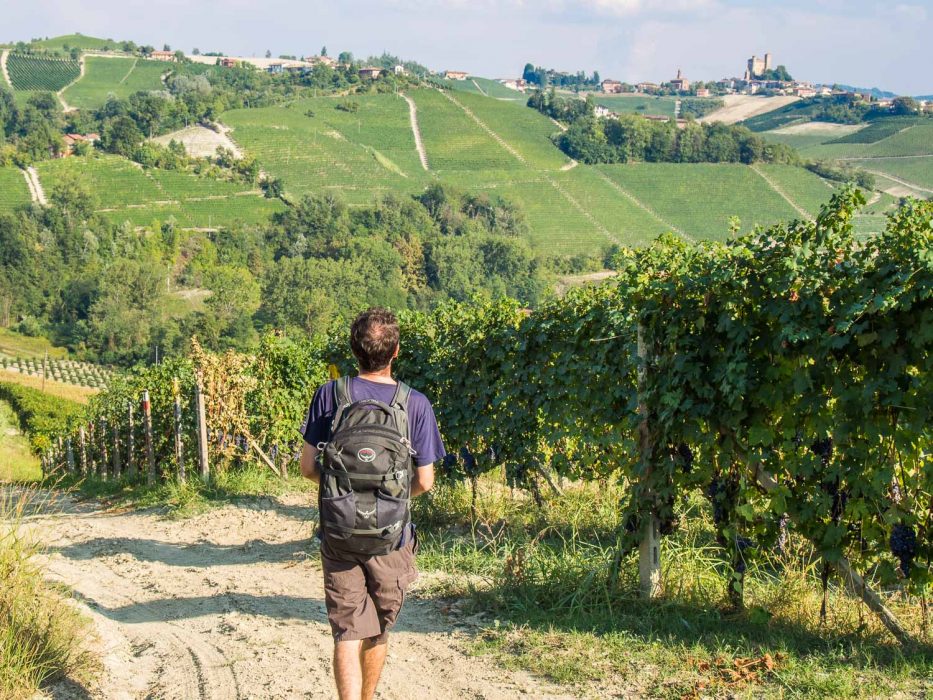
Our favourite feature of the Langhe is the marked trails that run through the vineyards.
They connect the wine villages so you can do some wine tasting without having to drive back.
We were staying in Castiglione Falletto and did one hour (each way) hikes to Barolo and Serralunga.
Longer trails through the Langhe hills are available, and some people even spend a few days walking around the area staying in a different village each night.
The trails are easy to follow (just look for the red and white markers), so you don’t even need a map.
4) Hill Towns
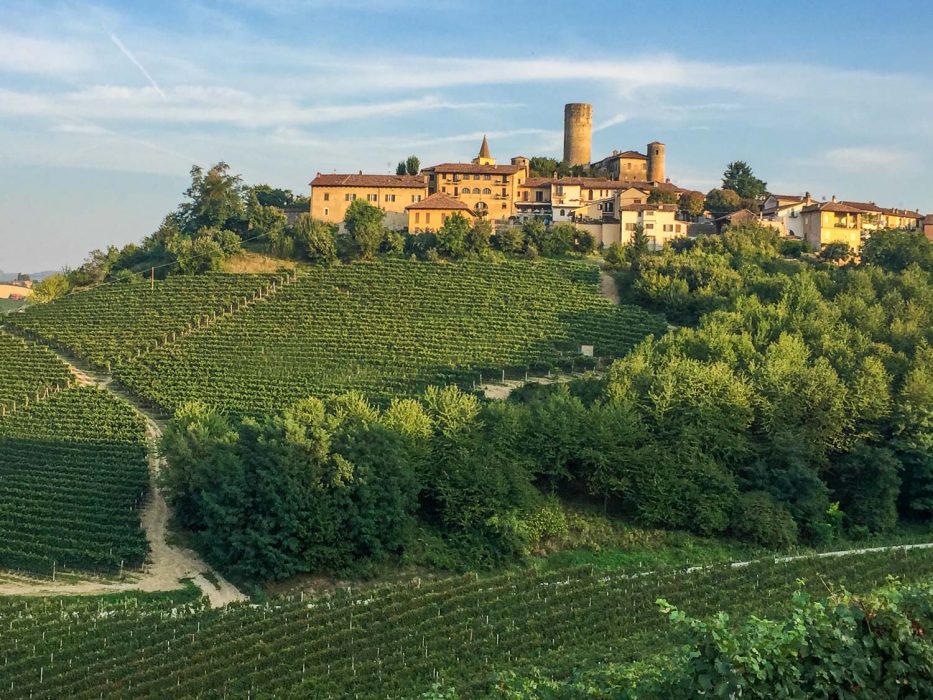
The Langhe is dotted with medieval hill towns and villages, most of them with their own castle, however small their size.
Barolo is the most famous village, but La Morra, Serralunga, Castiglione Falleto, and Verduno are all worth a visit.
Alba is the biggest town in the area and a lovely place for a wander (you could base yourself there if you prefer towns to countryside).
The prettiest village we visited was Neive in the Barbaresco wine region, which has been selected as one of the Borghi Piu Belli d’Italia (most beautiful villages of Italy).
5) Delicious Food
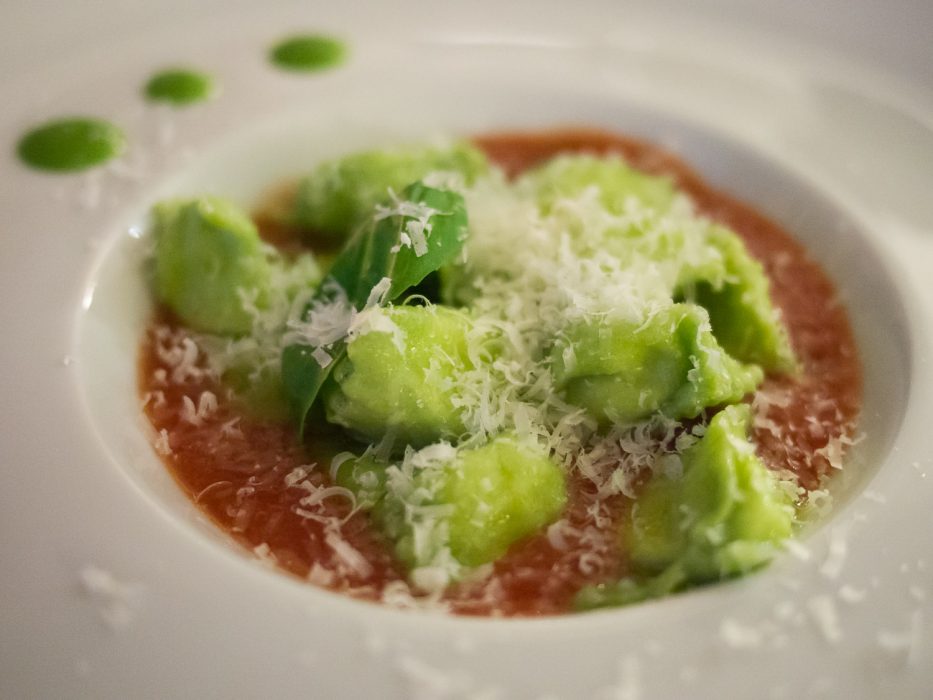
Hiking and eating were our two main activities in the Langhe. The food here is so good! I don’t think it’s possible to find a bad meal as every restaurant cares deeply about the food they serve.
The Slow Food movement originated in nearby Bra, and the Piemontese seem to take this literally as many of our meals were three hours long.
Each course is savoured from plentiful antipasti to the final caffe (with biscuits, of course).
Local specialities to try include hazelnuts (we passed many trees on our hikes), chocolate (this is where Nutella and Ferrero Rocher come from!), tajarin (long thin egg pasta), gnocchi al Castelmagno (potato dumplings with a pungent local cheese), and agnolotti (a type of ravioli).
The food in northern Italy is more meat-focused than the south, but we still found plenty of vegetarian options.
Read about our favourite Barolo restaurants.
6) Truffles
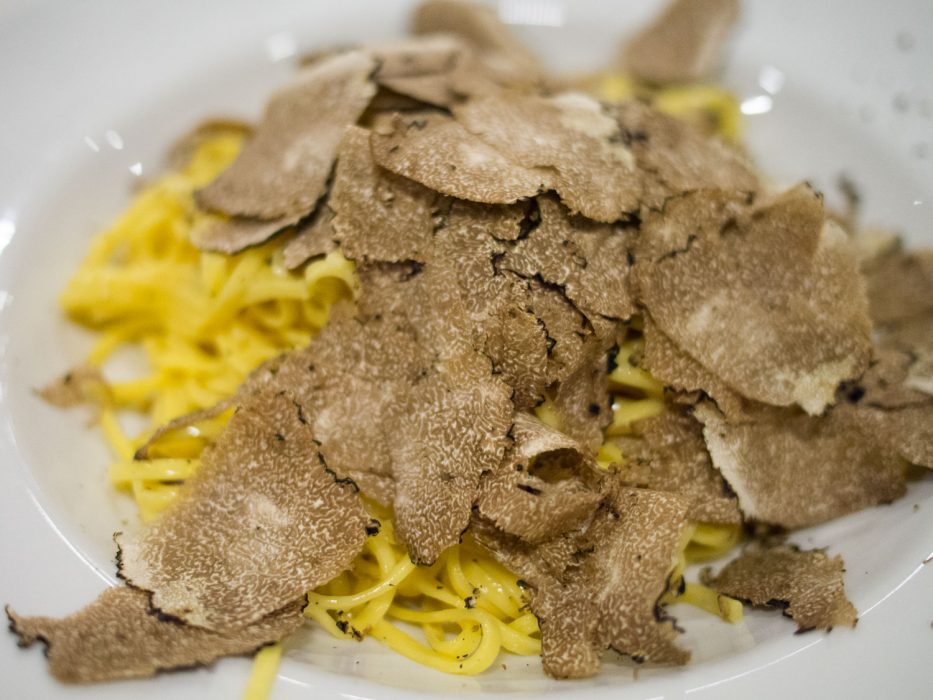
The most famous food in the Langhe is truffles, especially the delicate, aromatic white truffles.
They are only available in October/November, so we didn’t get to try them, but there were plenty of black truffles on the menu.
If you are a real truffle fan, you can go on a truffle hunt in the forest or visit Alba’s annual truffle fair.
This private truffle hunt combines a walk in the woods with a tasting at a Barolo winery.
7) Barolo Wine Museum
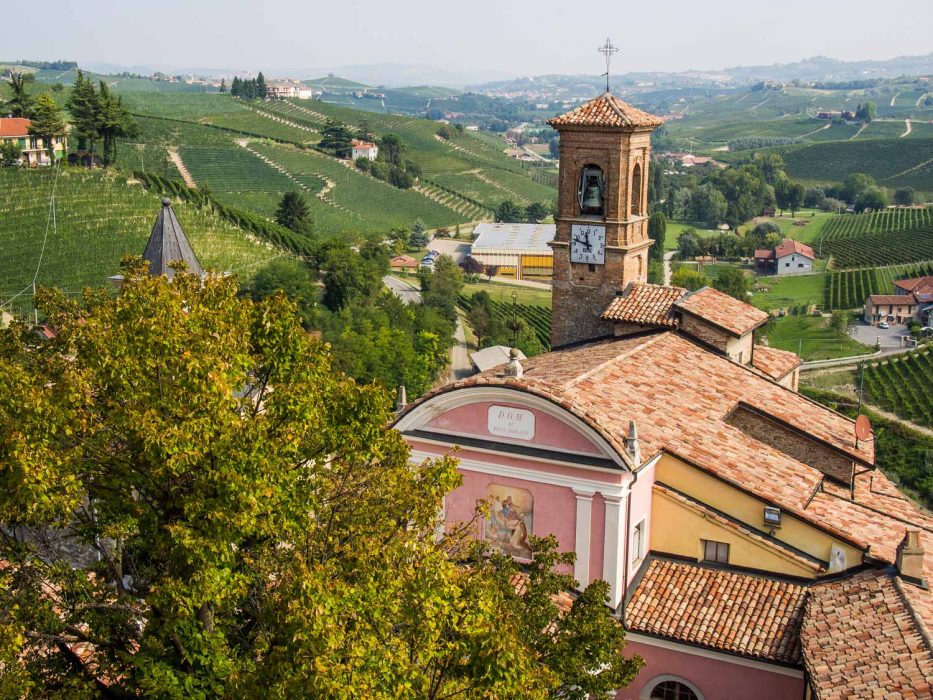
Barolo’s castle is home to an innovative wine museum. This is not your typical wine museum and it gets mixed reviews, but we loved it.
It’s quirky and interactive and fun. We say give it a try and go with an open mind!
There’s a tasting room at the end of the visit where you help yourself to a range of local wines for €2-4 per taste.
It’s an easy and unintimidating way to wine taste, but we had a much more informative experience at La Vite Turchese (where we could also pair food with the wine).
8) Great Accommodation
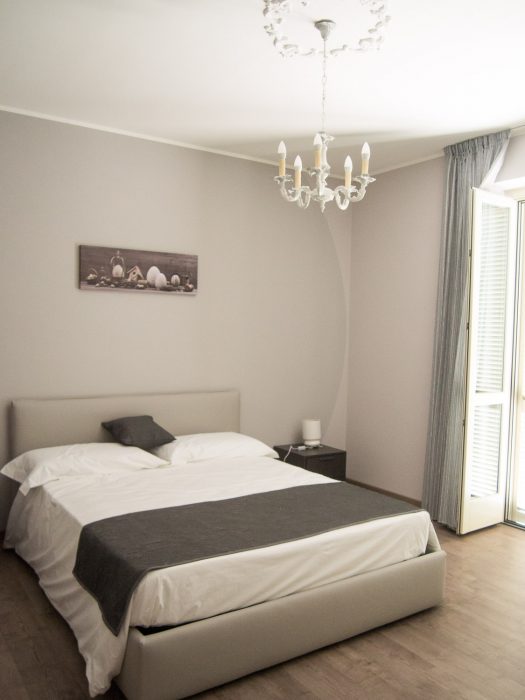
There are plenty of unique accommodation options in the Langhe from agriturismi (farm stays) to castles.
We stayed in this gorgeous, two-bedroom apartment on a vineyard on the edge of Castiglione Falletto. It is modern, spacious, and well-equipped.
The location is an ideal mix of countryside and town—we could enjoy the vineyard views from our terrace and walk to four restaurants in the village in a few minutes. It is also just across the road from the hiking path to Barolo.
Other great options are the Cascina Pugnane Wine Resort and Casa Svizzera Agriturismo.
Search for more accommodation in the Langhe here.
9) Combine with Turin
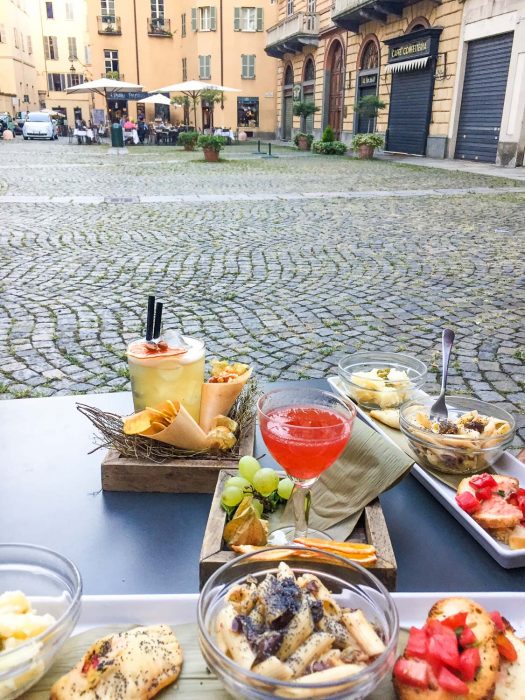
Turin was just a stop on our way to the Langhe, but we were pleasantly surprised by this underrated Italian city.
The pedestrianised historic centre is perfect for strolling, there are many excellent chocolate shops, and it’s home to some of the best aperitivo (pre-dinner drinks and snacks) in Italy.
We even found a fancy cocktail bar that served a platter of vegan dishes that was enough for dinner.
There’s a highly-rated cinema museum by the same creators of Barolo’s wine museum, but unfortunately it was closed on Tuesdays when we were there.
Turin is somewhere we’d love to go back and stay longer.
10) Easy Access
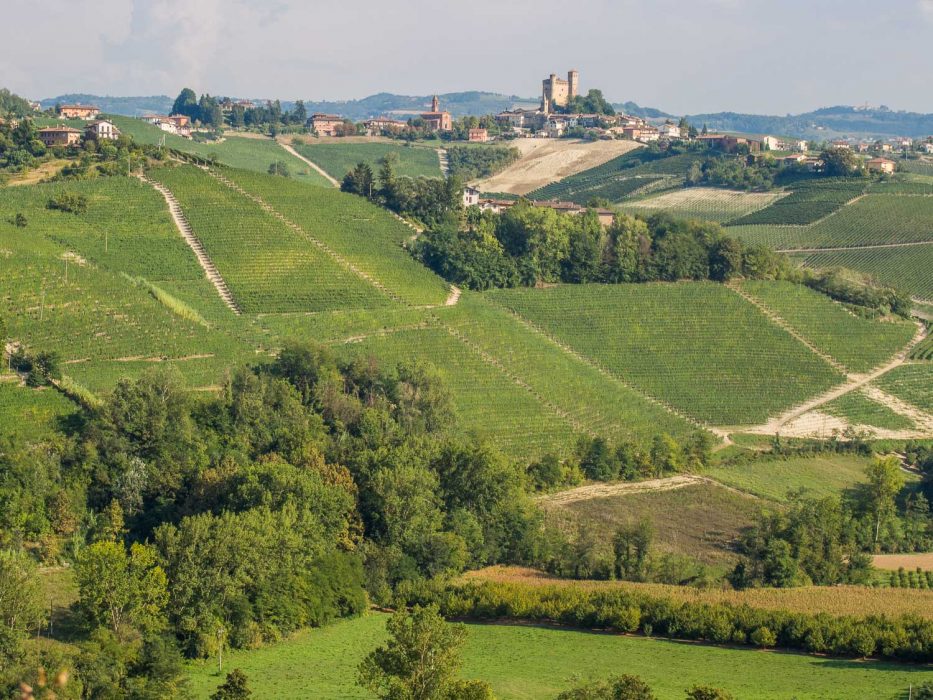
Langhe Piemonte is only an hour away from Turin (which has an international airport) so it’s very accessible. It’s best to hire a car to be able to visit the many villages in the area.
You could take the train to Alba and from there take tours or rent bikes, but a car gives you more freedom.
Despite the winding roads, the Langhe is a compact area so you don’t have to travel far to visit a range of villages and wineries. We never travelled more than 20-30 minutes from our base in Castiglione Falletto.
We reached Turin on a train trip from London to Italy and then rented a car to explore the Langhe. We use Rental Cars to find the best deals.
Langhe Italy Map
A map of the villages we recommend visiting in the Langhe.
Summary
I hope I’ve convinced you to add the Langhe Piemonte to your Italy itinerary! If you love good food, red wine, and vineyard-covered hills, you can’t go wrong.
More Italy Posts
Combine your visit to Piemonte with these other wonderful destinations in northern Italy:
- Where to Eat in the Barolo Wine Region
- 16 Unmissable Things to Do in Bologna
- The Best Varenna Restaurants at Lake Como
- Finale Ligure: The Quiet Side of the Italian Riviera
- 10 Ways to Make the Most of Your Stay on the Italian Riviera
- Dos and Don’ts of Eating in Italy
If you enjoyed this post, pin it!
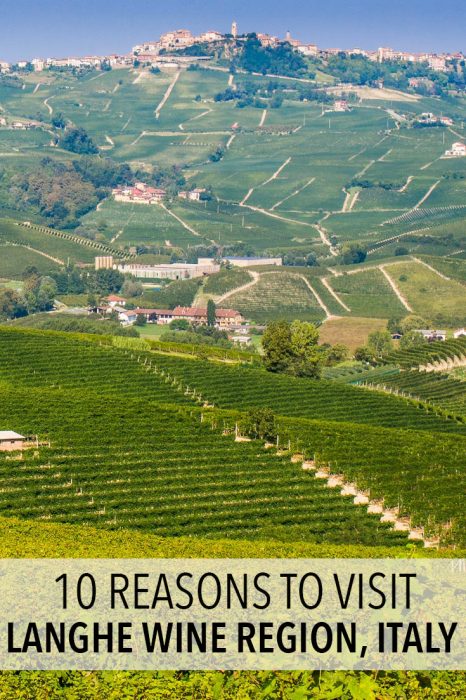
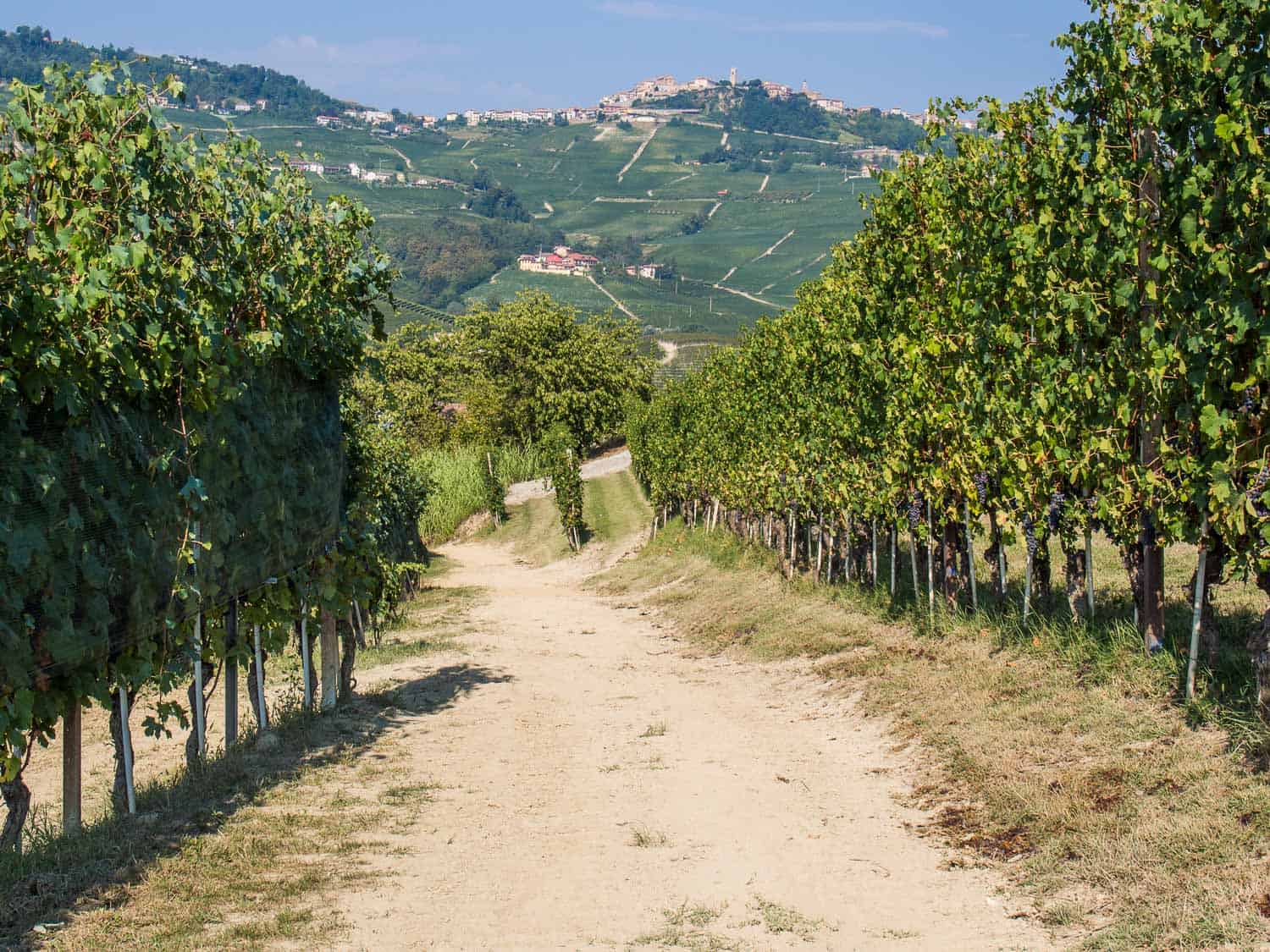
My family love in Turin, I had great fun exploring it, but there is still more I would love to see. My cousins took me to alba. Our surname is Boarolo, so we had to go to the village of Boarolo. Super food and wine. I love in South Africa, where we produce goods wine as well. Great reveiw
That’s fun to visit the village you are named after! Glad you enjoyed this lovely region!
oh I left Torino 40 years ago..to the US….sooo thinking of going back!
Wonderful review of the region. I’m researching Italian wines and am currently into Barolo and Barbaresco wines. I came across your website from Google and now I want to go visit! The description of it being a less-touristy-version of Chianti really stuck with me and makes me want to visit. Thank you!
A very enjoyable post, many thanks. We’ve recently spent ten days in the area, based near Grinzane Cavour, and were as pleased with our stay as you were with yours. Thanks again.
I’m glad you had a good time Dwight!
I’m so glad you discovered this little-known part of Italy. I’m an ex-pat, originally from Lancashire, living in Turin since 1987, and the Langhe are my refuge: I go whenever I can!
Chris
I am from Turin, I am so happy you liked it!
We really did. We could see ourselves spending a month or so there as two days wasn’t enough.
It’s such a pleasure to read your blog! All the sights and food looks amazing.
The truffle pasta looks simply amazing) Thanks for the article, this looks like a great itinerary for a visit